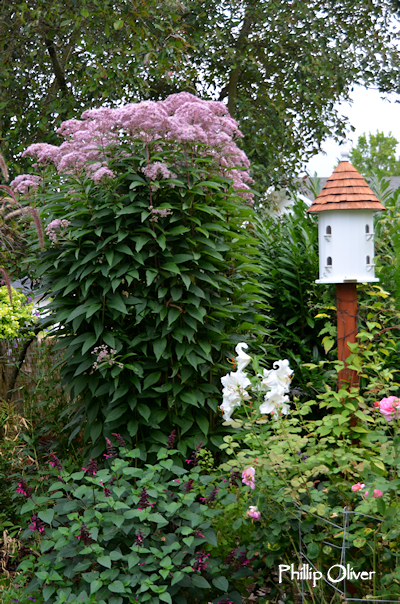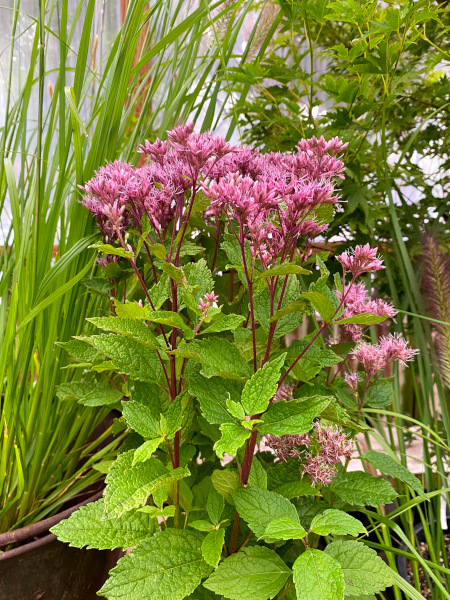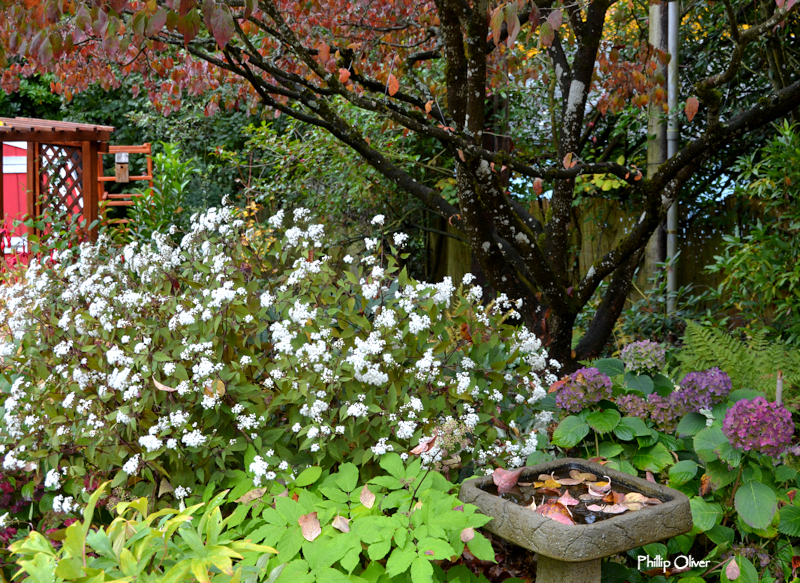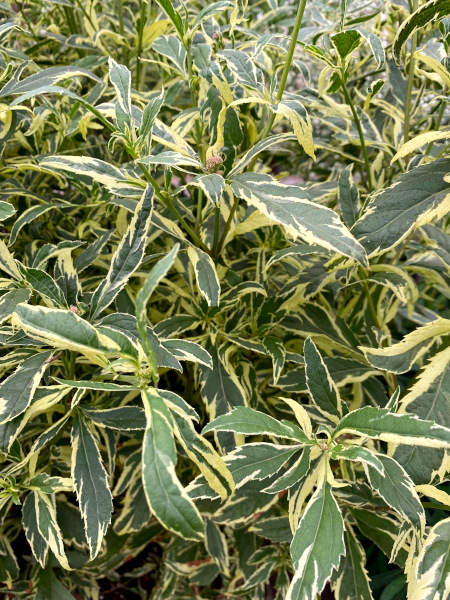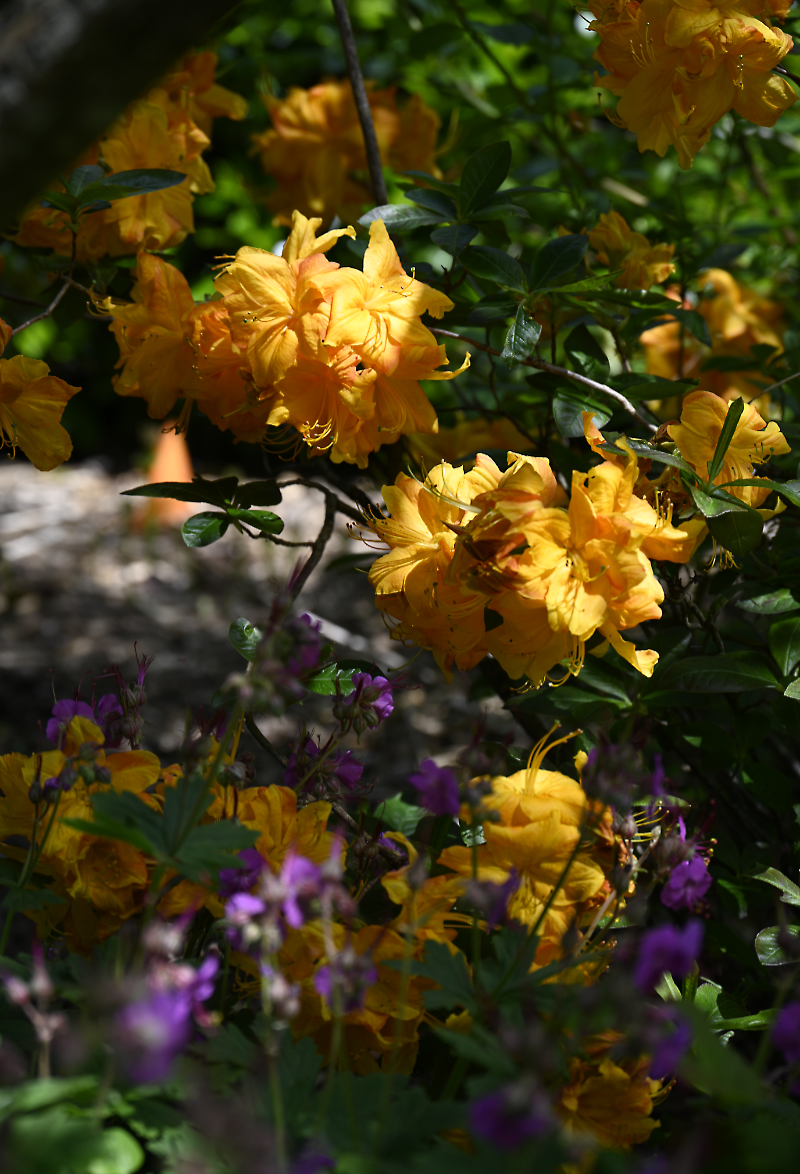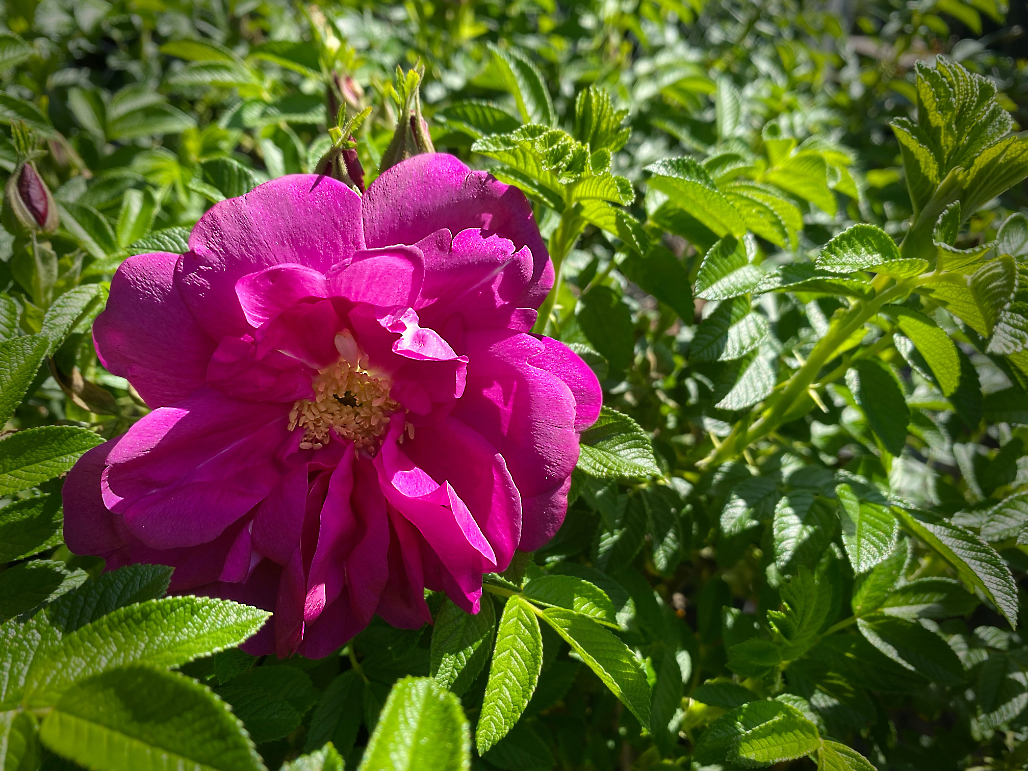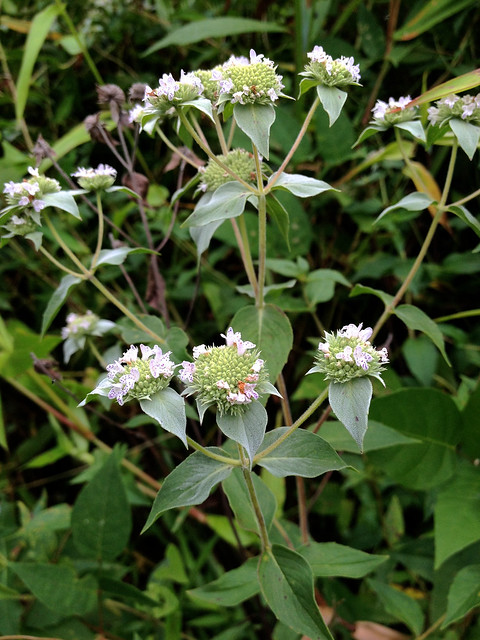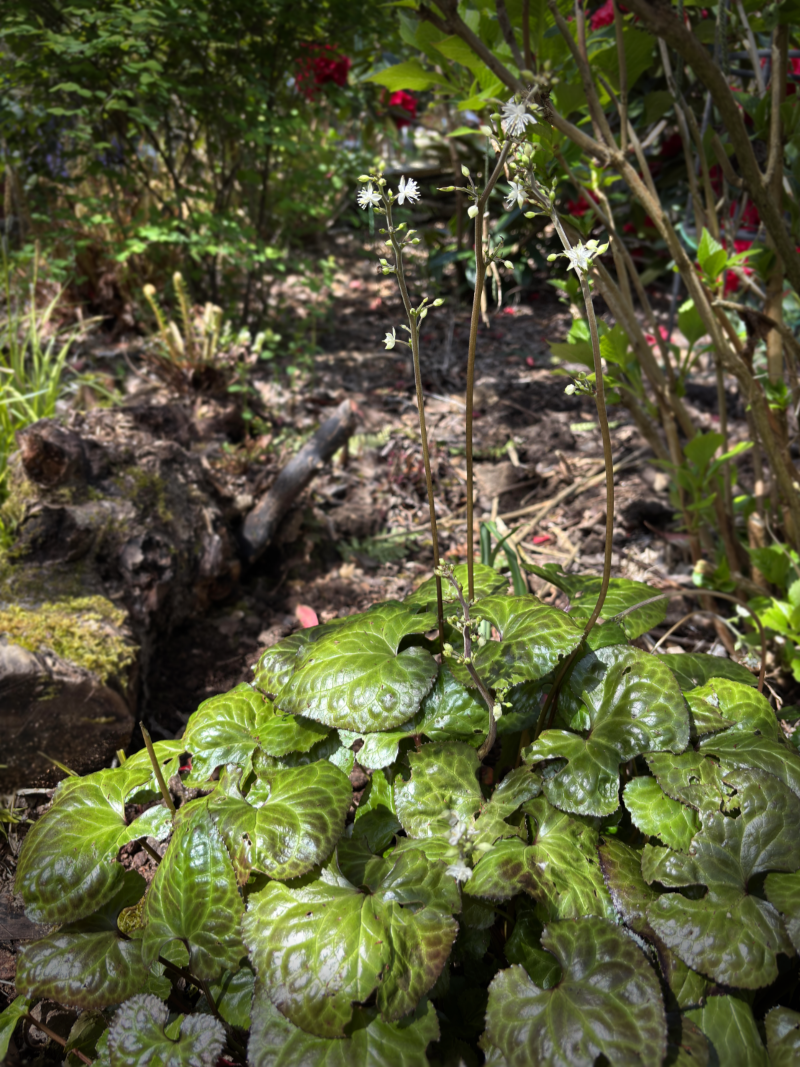Joe Pye Weed
So who is Joe Pye and why would you call a perennial garden plant a weed? Both valid questions. Firstly, Joe Pye was a Mohican sachem who used the plant to cure typhus and other ailments in the 1800s. Joe Pye Weed is a member of Eupatorium class of plants and are now classified as Eutrochium. Many are not considered garden-worthy, which may contribute to the “weed” connotation. However, there are several varieties that are desirable. You can find many of these varieties at Yard n’ Garden Land –Eupatorium ‘Atropurpureum’ (pictured above in my garden) is the most well-known variety. Tall, erect stems quickly reach 6-8 feet tall. Rose-pink flower heads begin to appear in late summer. The flowers are magnets for butterflies and bees.
Eupatorium maculatum ‘Gateway’ is very similar to the above but slightly smaller, from 4-6 feet.
Eupatorium dubium ‘Little Joe’ – Not enough space for the regular Joe Pye? ‘Little Joe’ is a more compact form, growing to 3-4 feet.
Eupatorium rugosum ‘Chocolate’ – Also known as White Snakeroot, this is one of my favorite perennials for fall and it does well in light shade. Growing to about 4 feet, the dark bronze leaves are covered in clouds of tiny white flowers in September. A wonderful plant for the fall garden.
Eupatorium fortunei ‘Capri’ – A dwarf, variegated variety which has emerald green featherlike foliage lined with cream and pink.
Joe Pye Weed is easy to grow in moist, average to rich soil in full sun or light shade. Once established, they are virtually carefree. They are tolerant of clay and moist soils. Staking may sometimes be required and plants can be divided after several years. Plants will die back in the winter and can either be trimmed back then or early spring. They are excellent plants in borders and can be used in either formal or informal plantings. The taller varieties even make good privacy screens.

